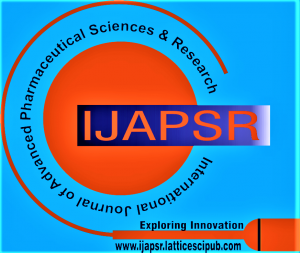![]()
Role of HILIC Stationary Phases in Pharmaceutical Peptide Analysis
Ayat Abbood
Ayat Abbood, Professor, Department of Medicinal Chemistry and Quality Control, Faculty of Pharmacy, University of Tishreen, Latakia, Syria.
Manuscript received on 20 March 2025 | First Revised Manuscript received on 06 April 2025 | Second Revised Manuscript received on 16 May 2025 | Manuscript Accepted on 15 June 2025 | Manuscript published on 30 June 2025 | PP: 1-8 | Volume-5 Issue-4, June 2025 | Retrieval Number: 100.1/ijapsr.C407405030425 | DOI: 10.54105/ijapsr.C4074.05040625
Open Access | Editorial and Publishing Policies | Cite | Zenodo | OJS | Indexing and Abstracting
© The Authors. Published by Lattice Science Publication (LSP). This is an open-access article under the CC-BY-NC-ND license (http://creativecommons.org/licenses/by-nc-nd/4.0/)
Abstract: Hydrophilic interaction chromatography (HILIC) is characterized by a polar stationary phase and an organic (apolar) mobile phase containing a small proportion of water. The HILIC retention mechanism is based on solute partitioning between the mobile phase (rich in organic solvents) and the aqueous phase layer. This separation method had already been used in 1975 for the analysis of oligosaccharides. The term HILIC was proposed by Alpert in 1990 during a study on the separation of amino acids and peptides. Stationary phases specifically developed for HILIC approaches can be particulate (pure silica or polar groups grafted onto silica-based or polymeric supports) or monolithic. This chromatographic mode has proven useful, particularly for hydrophilic peptides exhibiting low retention on RP columns. This review aimed to present the role of HILIC particulate and monolithic phases in the analysis of pharmaceutical peptides. Detailed descriptions of different HILIC phases were presented. Examples of peptide separation by HILIC mode were shown.
Keywords: Peptides, Analysis, Quality, Chromatographic HILIC Mode.
Scope of the Article: Pharmaceutical Technology
